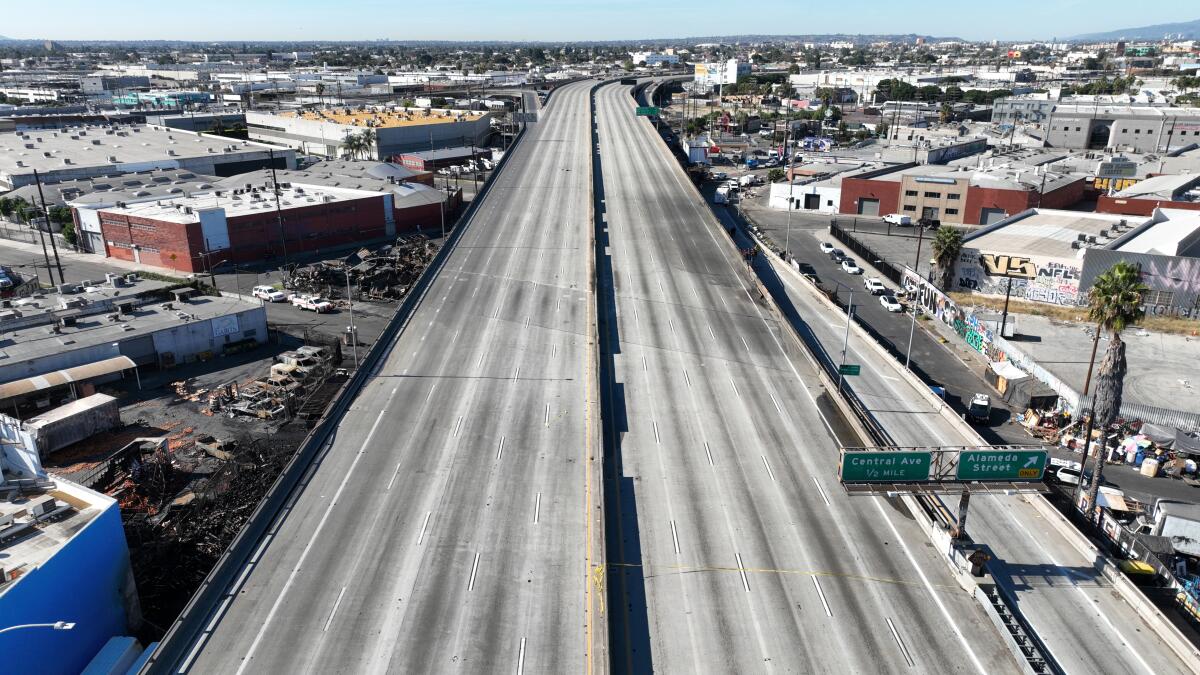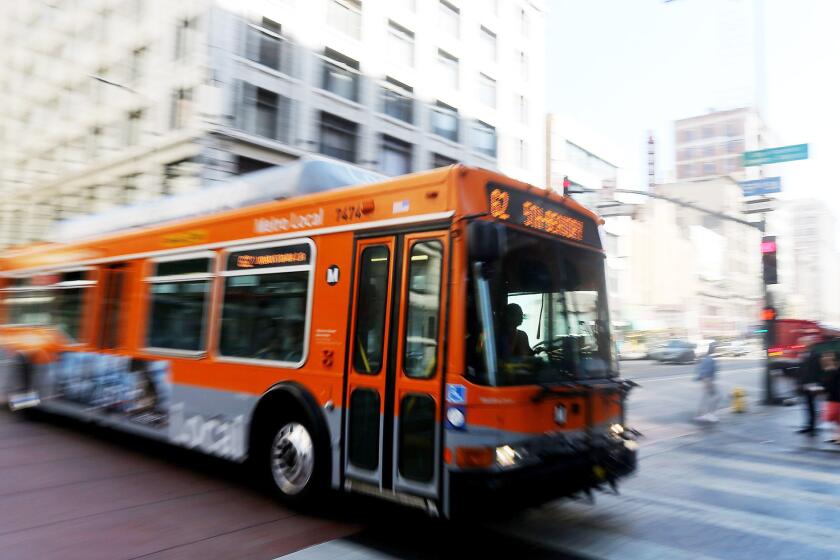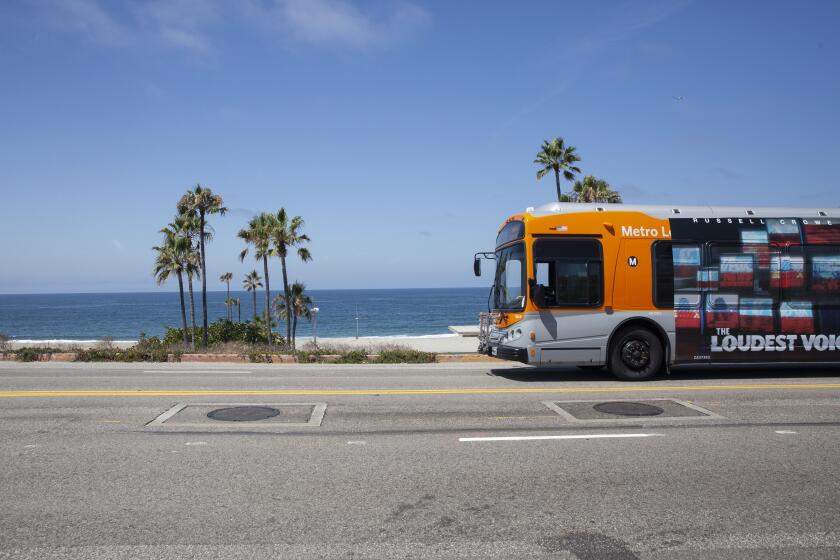Editorial: The 10 Freeway closure is an opportunity to make public transit shine

Los Angeles is a city where the closure of a one-mile stretch of freeway triggers a state of emergency.
It’s true that the 10 isn’t just any freeway. It’s one of the busiest corridors in the country, and the primary route between east and west Los Angeles. The section of the 10 Freeway damaged Saturday morning by a pallet yard fire is a major artery carrying some 300,000 vehicles in, out and through downtown most days. (The fire is being investigated as arson.)
So the temporary shutdown is a big deal. It’s also a painful reminder of Los Angeles’ transportation challenges. This sprawling region, where many people commute long distances to jobs and school and for other needs, remains too dependent on cars as the primary mode of transportation. Past temporary freeway closures have been considered so potentially catastrophic that they were given names like Carmageddon and Jamzilla. And now we have the Palletpocalypse.
If California wants people to drive less to cut planet-warming emissions, the state should be spending far more money on pedestrian, bike and transit projects.
In an ideal world, a freeway closure wouldn’t upend lives and businesses. With more bus and rail lines, along with faster, reliable service, there would be no need to panic. Travelers would have ample choices to get to their destination, and with fewer passenger cars on the road, cargo trucks could have easier passage.
Los Angeles Mayor Karen Bass and Gov. Gavin Newsom have pledged to get the 10 Freeway fixed and reopened as fast as possible, which is good and necessary. But why stop there? They should also push for a rapid expansion of transit service. That would serve travelers now during the closure and encourage people to keep using transit after the route reopens.
Metro now has 40 miles of bus lanes in Los Angeles, with plans to reach 100 miles in the next few years. Getting buses out of traffic make service faster, more reliable and better for riders.
Indeed, Metrolink, the six-county Southern California commuter rail network, announced it would temporarily add six round trips between Union Station and Covina on the San Bernardino Line, which will mean trains run about every 30 minutes. Metrolink has aspired to provide such frequent service to make its trains more appealing to commuters, tourists and leisure riders in advance of the 2028 Olympics. But why not plan to make some of these changes permanent?
Transit advocates want L.A. and California leaders to turn this emergency into an opportunity, by accelerating existing transit services and programs. For example, Los Angeles could speed up the installation of bus-only lanes in areas affected by the 10 closure so riders don’t get stuck in traffic.
Twenty-five participants in a journalism fellowship in L.A. used Metro buses and trains to get to multiple meetings a day for a week. Safely. Happily. And on time.
Metro could boost service on the E Line, which runs between East Los Angeles and Santa Monica, paralleling the 10 Freeway. By giving the light rail line priority at traffic signals and running trains more frequently, more riders could be enticed to use the system and, ideally, keep riding after the 10 reopens. Metro, however, is taking a wait-and-see approach, a spokesperson said, and will increase service if ridership increases. This seems like a missed opportunity.
Los Angeles has been on a public transportation building boom, thanks to voters who have approved four sales tax increases since 1980 to pay for bus and rail projects and programs. In fact, over the summer, Metro opened the Regional Connector that ties together three rail lines along one route under downtown, providing more direct access to the city center and eliminating the need to transfer for many riders.
While bus and train service is improving, L.A. still has a long way to go to dethrone the car as king and usurp freeways as top political priorities. So, yes, get the 10 Freeway fixed and reopened quickly. But don’t let this crisis go to waste — Los Angeles can use this moment to build a better transportation future.
More to Read
A cure for the common opinion
Get thought-provoking perspectives with our weekly newsletter.
You may occasionally receive promotional content from the Los Angeles Times.













